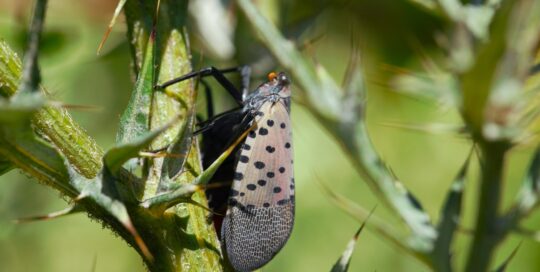Dragonflies and Why You Want Them
Views: 31999
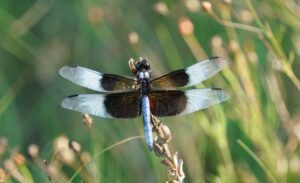
Yesterday evening, I looked up in twilight to see dozens and dozens of insects darting and dancing in the sky above my yard, outlined against the setting sun. At first, I thought they must be mosquitoes, there were so many of them. But as I watched, mesmerized, I realized, no, those are dragonflies! A cloud of them…. it was magical. Dragonflies, with their intricate colors and graceful flight, have captured the hearts of gardeners and nature enthusiasts for centuries. So, today’s blog is about dragonflies in the garden, and why you should want them there.
Life Cycle
Much like butterflies, dragonflies undergo a remarkable metamorphosis as they transition from an egg to an adult insect. Their life cycle can be broken down into four distinct phases:
- Egg stage: Dragonflies start their life cycle as eggs laid on or near water bodies. Adult females lay their eggs on plants, rocks, or other submerged surfaces. The duration of this stage varies depending on the species and environmental conditions.
- Larva (nymph) stage: Once the eggs hatch, dragonfly larvae, often called nymphs, live primarily in water. They are voracious predators that feed on small aquatic insects, tadpoles, and even small fish. (A dragonfly nymph got into one of my aquariums many years ago and ate several of my guppies before I realized what was happening.) The nymph stage can last from several months to several years, again depending on the species.
- Pupa stage: As the nymph nears adulthood, it undergoes a remarkable transformation inside a pupa. During this phase, the dragonfly metamorphoses into its adult form.
- Adult stage: Once the transformation is complete, the adult dragonfly emerges from the pupal case with its wings still soft. Once the wings have hardened, the dragonfly takes to the skies.
Common Species
Here are three species I have in my yard. These are fairly common in the U.S., so there’s a good chance you’ve seen them before, too.
Common whitetail: A very common dragonfly across North America, the males and females of this species look very different.
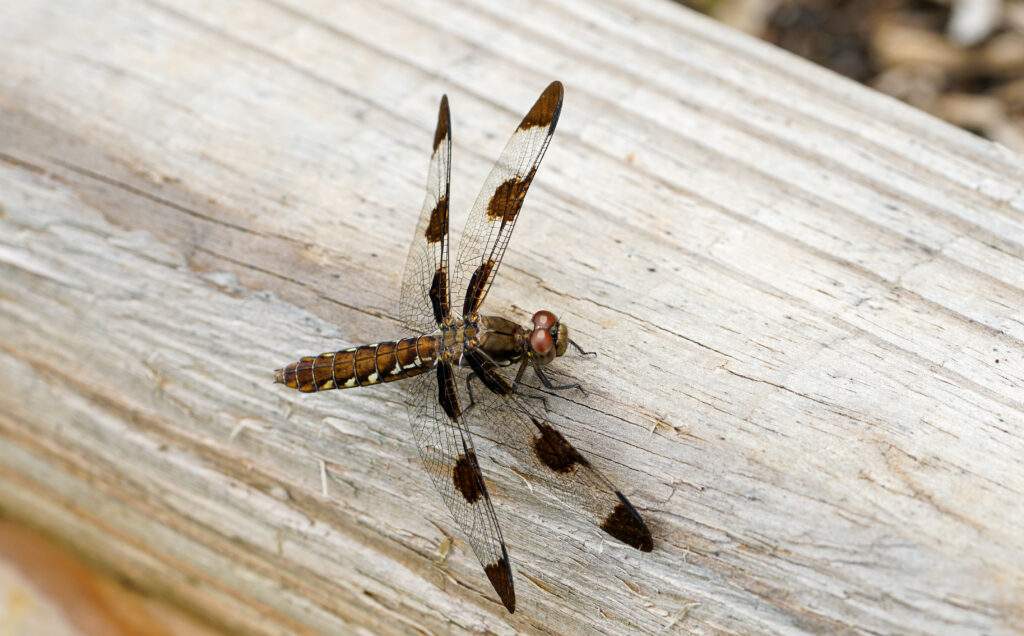
An adult female common whitetail.
Blue dasher: A voracious eater, they are supposedly capable of eating hundreds of insects per day.
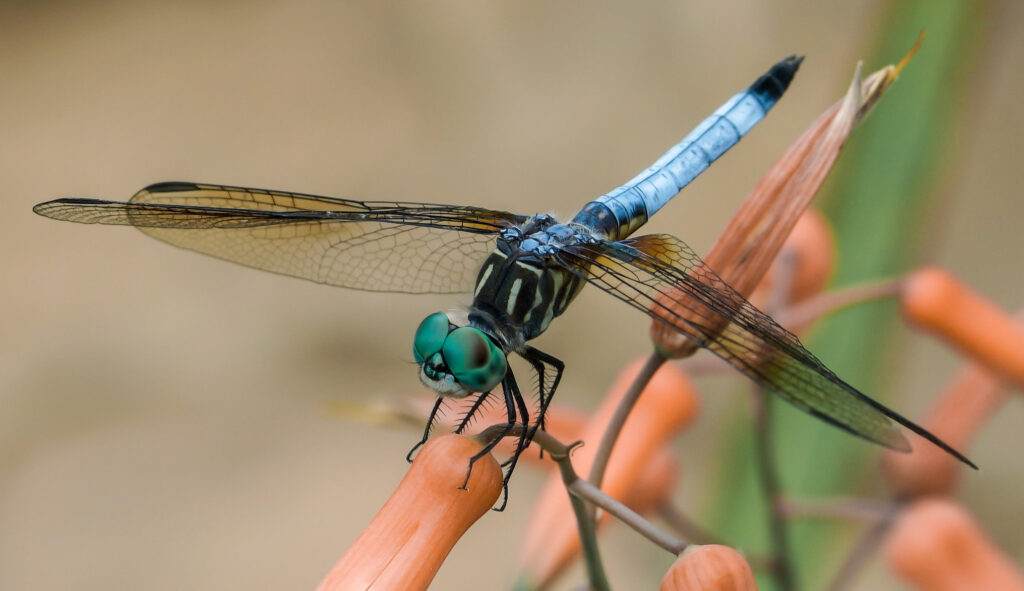
Blue dasher male.
Widow skimmer: These skimmers will hang out near quiet bodies of water such as ponds and muddy areas in addition to lakes, streams, and creeks. Males and females look very different (the featured image on this blog is a male).
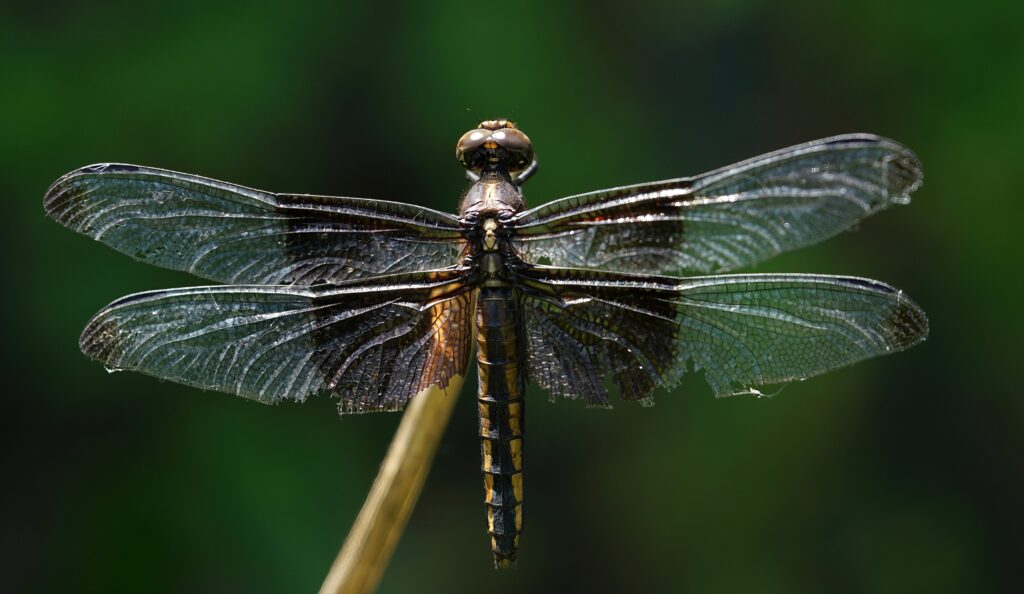
Female widow skimmer.
Pros of Having Dragonflies in Your Garden
Having dragonflies as residents in your garden can provide numerous benefits:
- Natural pest control: Adults are fierce predators and feed on various pests like mosquitoes, flies, and gnats. Anything that eats mosquitoes is welcome in my yard! That said, they will eat some beneficial insects, too. Remember, if you have dragonflies, you have a healthy ecosystem to attract them.
- Pollination assistance: While dragonflies are not as efficient as bees or butterflies in pollination, they still contribute to the process to some extent as they move between flowers.
- Aesthetic appeal: Watching dragonflies gracefully glide over water bodies adds a touch of natural beauty and wonder to any garden.
Gardening for Dragonflies
To create an inviting environment for dragonflies, consider implementing the following tips:
- Water features: Dragonflies are aquatic insects. Installing a pond, a small water garden, or even a large container with still water may attract dragonflies to lay their eggs. Be sure to incorporate a variety of submerged and emergent plants in and around the water, providing ideal habitats for the dragonfly larvae.
- Native plants: Dragonflies are attracted to natives such as monarda, rudbeckia, coneflower, butterfly weed, and cardinal flower. I often see them on my swamp milkweed.
- Sunlight and Warmth: Dragonflies are cold-blooded creatures that rely on the warmth of the sun to regulate their body temperature. Ensure that your garden has sunny spots where dragonflies can bask and warm themselves.
- Avoid Pesticides: Dragonflies are natural predators, and the use of pesticides can harm them directly or indirectly by reducing their prey population.
- Reduce Light Pollution: Dragonflies are often drawn to bright lights at night, which can disrupt their natural behavior and lead to exhaustion. Minimize outdoor lighting, especially near your water feature, to avoid attracting dragonflies away from their natural habitats.
By providing a hospitable environment with water sources and suitable plants, you can add these magical creatures to your outdoor haven. Happy gardening and dragonfly watching!
Meet Leslie Miller
Leslie Ann Miller shares 3.5 acres in rural Oklahoma with birds, butterflies and wide variety of animals. She is currently transforming her yard with plantings…
Leslie's Recent Posts
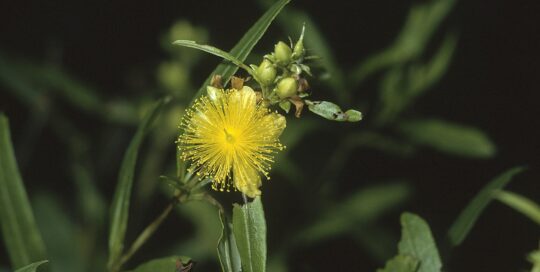
Shrubby St. John’s Wort: A Golden Addition for Your Pollinators
